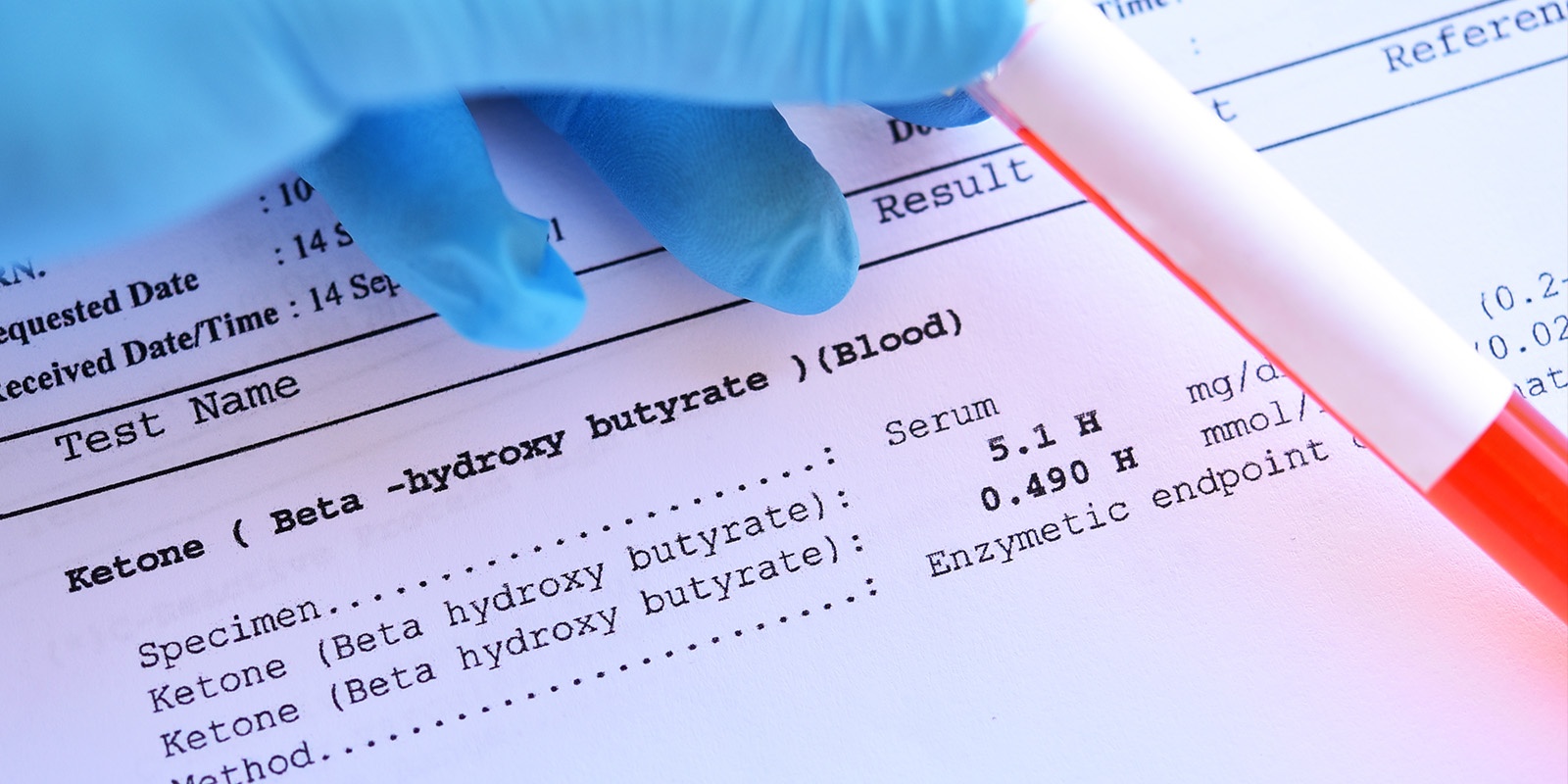What’s the difference between ketosis and ketoacidosis? It’s a common question. Both words are similar and involve ketone production; however, the likeness stops there. Ketosis is a natural metabolic process where your body uses fat for fuel rather than glucose (carbs), whereas ketoacidosis is a dangerous medical condition. Here we explain the details to eliminate any confusion.
What is Ketosis?
WebMD defines ketosis as “a normal process that happens when your body doesn’t have enough carbs to burn for energy. Instead, it burns fat and makes substances called ketones, which it can use for fuel.” To get into nutritional ketosis, you switch your diet to a ketogenic diet, or a diet very low-carbohydrate diet with moderate protein and higher fat. With a lack of carbs for energy, your body begins to rely on ketones from fat as fuel rather than glucose. There are many health benefits associated with dietary ketosis and the low-carb diet, and scientists continue to discover more. Some of these benefits include weight loss, blood sugar regulation, all-day energy, better mental focus and clarity, less brain fog, less joint pain and inflammation, and better skin.
Signs of Ketosis
Once you follow the keto high-fat diet, there are several early signs, or side effects, that can indicate you are entering and sustaining a state of ketosis, including:
- Keto breath: slight metallic or fruity breath from the initial rise in ketones (some consider it bad breath)
- Weight loss: initially from water weight (the keto diet is diuretic)
- Increased levels of ketones in the blood (blood ketone levels), which is easily measured. Ketosis begins at .5 mmol/L.
- Keto flu symptoms: These are temporary, flu-like symptoms many people experience as their body adjusts to ketosis. They include fatigue, headache, digestive issues, and muscle cramps.
- Decreased athletic performance: This is temporary as your body retrains itself to utilize ketones for energy rather than glucose (carbs/sugar).
Once you adjust to a keto lifestyle, keto flu symptoms typically subside, and all the amazing benefits kick into gear.
Now that you have an understanding of ketosis, let’s explore ketoacidosis to help clear any confusion between the two.
What is Ketoacidosis?
Ketoacidosis, also known as Diabetic ketoacidosis (DKA), is a life-threatening condition associated with severely uncontrolled type 1 diabetes and in rare cases, type 2 diabetes. DKA can happen when the body produces dangerously high levels of ketones at the same time as high blood sugar, which can change the normal functioning of internal organs, such as your liver and kidneys.
The main cause of ketoacidosis is poorly managed type 1 diabetes (i.e. people not properly taking insulin), typically in younger people. Illnesses, stress, poor diet, and alcohol and drug misuse are also triggers for diabetics.
It’s critical anyone experiencing ketoacidosis gets prompt treatment; however, it’s nearly impossible to get ketoacidosis if you don’t have type 1 diabetes. The keto diet can have a significant effect on ketone and glucose levels. So if you have type 1 diabetes and want to try keto, you should work directly with your doctor to avoid any serious complications.
Warning Signs of Ketoacidosis:
Following are common warning signs of ketoacidosis:
- Blood sugar registering over 240 mg/dL (i.e. extra high blood-glucose levels)
- Symptoms of high blood-sugar: dry mouth, thirst, or frequent urination
- Ketones registering greater than 5 mmol/L with glucose registering over 200 mg/d (it’s only concerning when you have high ketones AND high glucose.)
- Vomiting for more than 2 hours
- Upset stomach
- Strong acetone on your breath (this is also a sign of normal ketosis in the early stages, but will accompany some of these other symptoms in cases of ketoacidosis)
- Sleepiness/drowsiness/confusion
- Difficulty breathing or shallow breathing
- Passing out
If you experience any of these symptoms and are a type 1 or type 2 diabetic, seek immediate medical attention, you may be experiencing ketoacidosis. Keep in mind, this condition most typically occurs in cases of Type 1 diabetes and rarely in cases of Type 2 diabetes.
The Final Word
Ketosis vs ketoacidosis: what’s the difference? Ketosis should never be confused with diabetic ketoacidosis. Ketosis is a natural metabolic state, whereas ketoacidosis is a dangerous medical condition that is almost exclusively a complication of Type 1 diabetes. We hope this cleared some of the confusion for you. If you are a type I or type 2 diabetic exploring ketosis, work closely with your health care provider to discuss diabetes management, ensure you don’t possess concerning risk factors that can result in complications.



